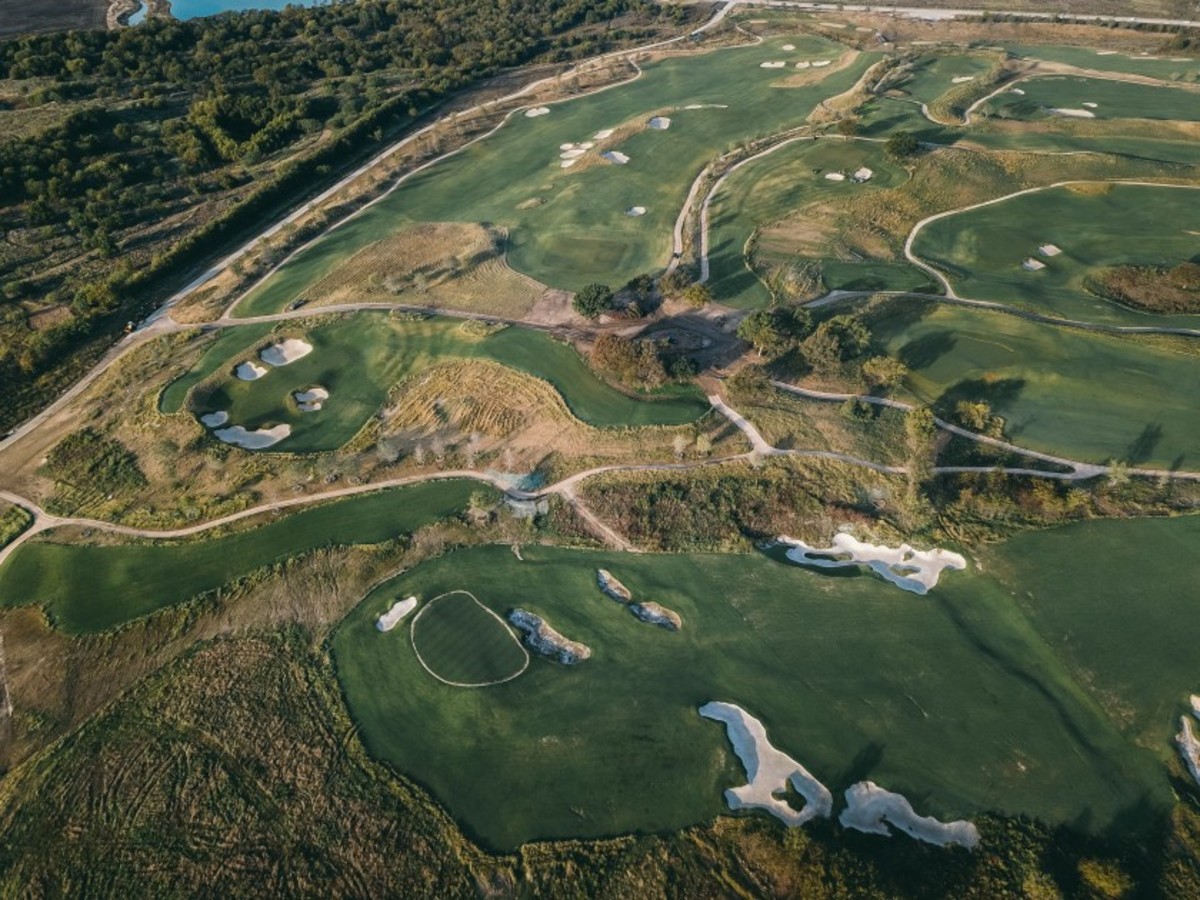PGA Frisco: The building of a legacy

FRISCO, Texas — Since designing and opening the 2016 Olympic Golf Course in Rio de Janeiro, Brazil, architect Gil Hanse’s profile has shot higher than a Bryson DeChambeau tee shot. Renovations at famed courses Winged Foot, Merion, Oakland Hills and Baltusrol Golf Club have followed.
But when the time came for a legacy play — for himself and the PGA of America — the new golf course at the PGA Frisco project was something he couldn’t resist.
“We’re confident in what we do and how we can do it here, but to put it simply, projects like this don’t come around very often,” said Hanse about the 665-acre complex. It’s 40 minutes north of downtown Dallas, and will be the new PGA of America headquarters beginning in 2022 and the long-term competition venue of all manner of PGA professional and amateur golf events.

Before the first ball is ever struck at the public facility, which is nearly finished but won’t open for play until 2022, the PGA has already booked the course for 23 major championships. Included are two PGA Championships (the first in 2027) and three PGA Seniors (the first in 2023). A Ryder Cup, which has never set foot in north Texas, hasn’t been officially announced, but the first open American date (2041) is certainly possible.
PGA of America CEO Seth Waugh calls the project, which includes a second course by Beau Welling, a huge resort hotel, teaching facilities, short course, practice area, shops and restaurants, the “Silicon Valley of golf.”
Hanse uses the title “the American St. Andrews” and said it’s something he will stake his considerable golf architecture legacy on over the next several decades.
“To know that they have already set this many tournaments at this course and are wanting to get it right, to make a legacy for golf, that’s very, very special,” he said. “We’re very honored to get to do this.”
Jimmy Terry, PGA senior director of PGA Golf Properties, said the project is not aimed at hardcore golf, but is multi-dimensional and meant to also appeal to the casual or non-golfer. The courses are owned by the City of Frisco, but operated by the PGA of America under a long-term agreement. And while the courses must be designed to handle the world's best golfers, the primary clients will be amateurs happy to break into double figures for 18 holes or just move the ball forward.
“Over the last 25 years, we’ve done a lot to try to kill golf,” Waugh said. “We’ve made it too hard, too expensive and take too long. The one thing we haven’t done is make it too fun. This project is a chance to push back on that.”
Indeed, Hanse said part of his mission was to craft a course that can challenge those looking to lift golf’s greatest trophies, but also those looking to win some spending money in a weekend buddies match. He said lessons learned from his Olympic Course, now a public facility, helped in designing Frisco.
“Instead of individual tee boxes as you see on most courses, we designed one long ribbon of tee boxes, which can range as long as 100 yards and allows the PGA to set up the tee for any yardage,” he said. “Also, with the NorthBridge Bermudagrass, the fairways can be mowed to be super narrow or wide enough to catch the worst tee balls.”
Hanse also worked to build some drama into the par-72 East Course (Welling is doing the par-72 West Course). Hanse included two drivable par 4s, one on each side of the layout (Nos. 7 and 15), along with several back-nine holes where the natural Panther Creek comes into play on several holes.
The East's back nine is already shaping up to have an abundance of risk and reward. The par-4 12th green is the course's largest, but the par-3 13th hole has one of the smallest greens and plays 277 yards from the back tee. The hole features an enhanced earthen wall that supports and guards the left side of the green and elevates the putting surface to avoid Panther Creek overflow from flooding it.
The par-5 14th has a blind tee, though a bunker serves as a directional guide. The 15th is a long par 4 that is drivable for the best players in the world
Hole 17 is a dangerous and short par 3 with water along the right side as the golfing drama continues to build. The par-5 18th finishing hole is a prime opportunity to finish your round on a sterling or sunken note as water comes into pay twice, including a large creek in front of the green.
“What we did was find some of the dramatic elements, which we enhanced,” Hanse said. “We wanted to create drama here and we want to set up ways for players to succeed in a positive way. Not for ways for them to fail in a negative way or get beat up every hole.
“If you look at past Ryder Cups, most matches end between the 15th and 17th holes. So adding a drivable par 4 (15) and a short par 3 (17) here could be very exciting. We want to see fireworks. We didn’t want to see players just hanging on for pars.”
To accomplish all of that in the thick Texas soil, Hanse's team moved plenty of earth — approximately 1.6 million cubic tons. In some cases, they had to raise the fairway 10 feet to keep it out of the flood plain.
Hanse and Welling worked together to build a short 10-hole lighted practice course where holes range between 40 and 120 yards, along with a grass putting green that is second only to Pinehurst in terms of square footage in the U.S.
The West Course will have more elevation change with sweeping views of the North Texas landscape and not as much bite or drama as the East championship venue.
“I’d say the courses are cousins, not sisters,” Terry said.
The entire facility is circled by a 3.1-mile concrete path that will double as pathways for sponsors, vendors and TV trucks during championship events and as City of Frisco walking and biking trails the rest of the time.
The legacy Hanse and the PGA of America hope to achieve for this former prairieland is one that will grow and showcase the game of golf for the best, the most avid and those who have no current interest at all.
“I really believe, while it may be long after I’m gone, that you will have somebody take up the game and maybe win one of our tournaments one day, because they were having ice cream or coffee here, looked outside, saw what people were doing seemed like fun and decided to give it a try,” Terry said.
Sign up to receive the Morning Read newsletter, along with Where To Golf Next and The Equipment Insider.
